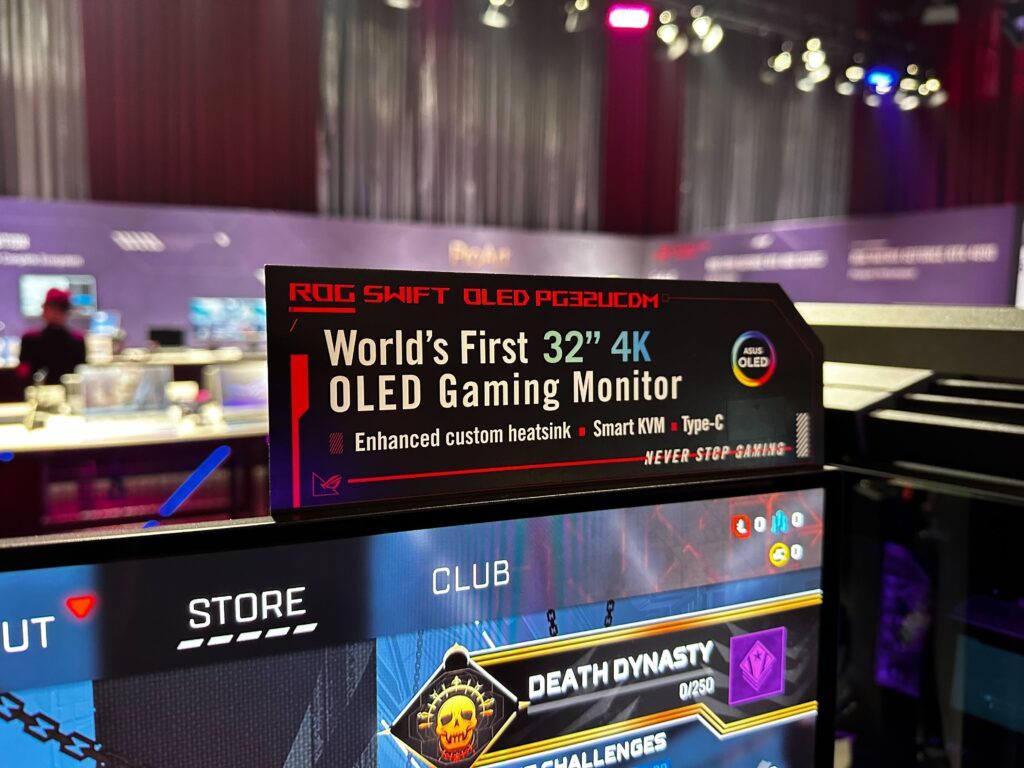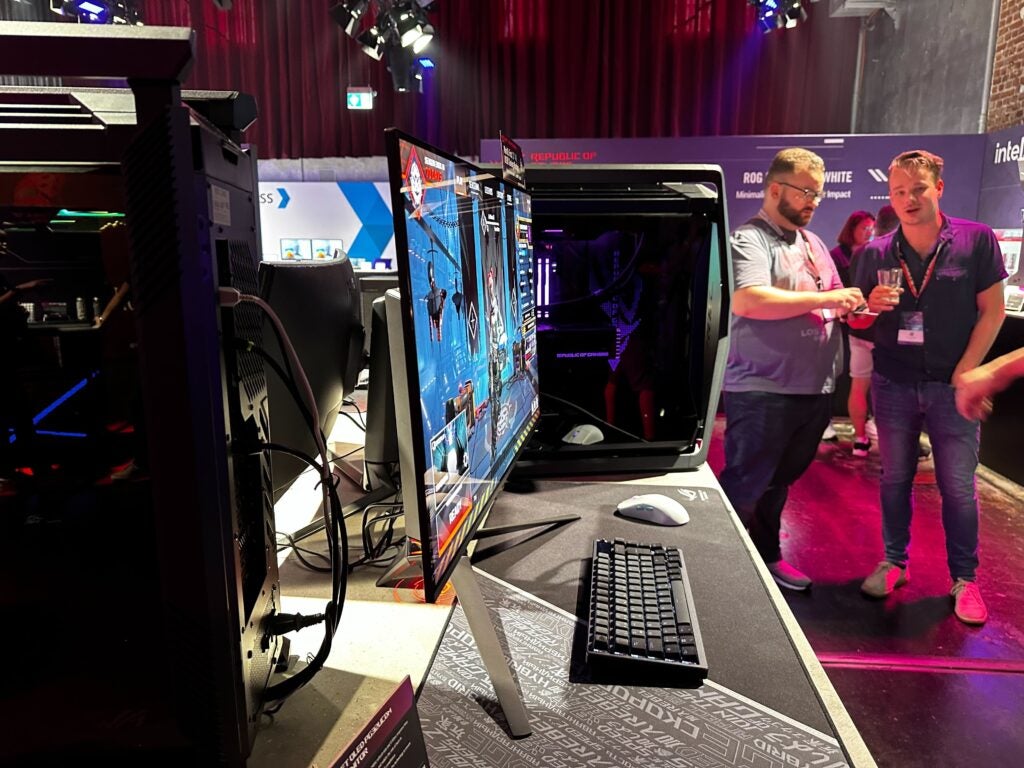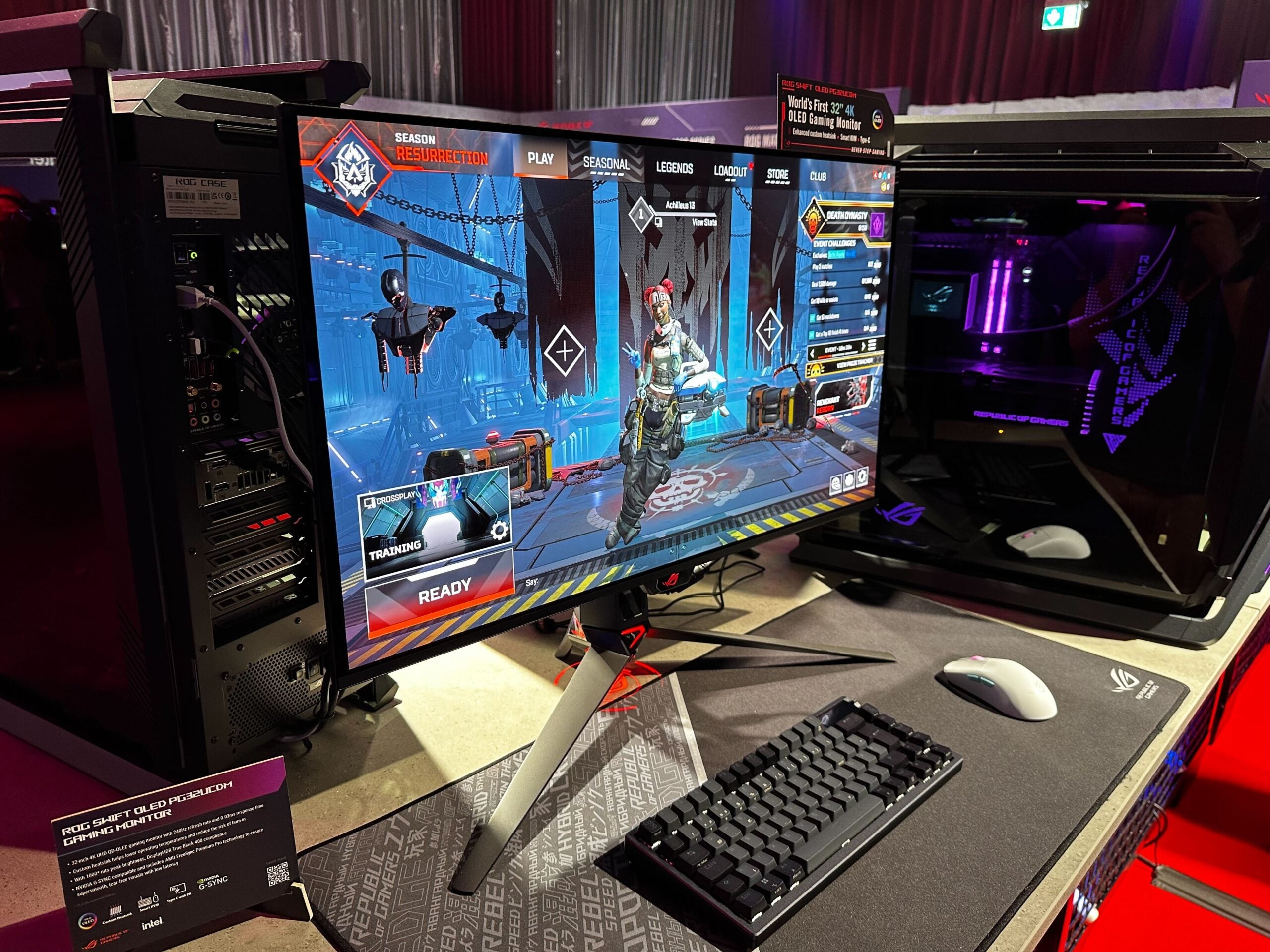First Impressions
The Asus ROG Swift OLED PG32UCDM is the world’s first 32-inch 4K QD-OLED monitor, bringing luxurious detail and colour to a 240Hz gaming experience.
-
Second generation Quantum Dot OLED technologyQD-OLED panel for liquid blacks and bouncing colour. -
High resolution and refresh rate4K and 240Hz provide quality and resolution for gamers. -
Multiple device managementSmart KVM and USB-C connectivity for easy device control and charging.
Introduction
Ever wondering if gamers can have it all? That’s what the Asus ROG Swift PG32UCDM is shooting for. The world first monitor from Asus provides high-end specs across the board to try and accomodate all the luxurious needs of demanding gamers.
Asus isn’t shy about launching world first devices, with the ROG Swift PG49WCD breaking cover at Computex 2023. At Gamescom 2023, it’s at it again with a gaming monitor that’s sure to blow your socks off when you look at the spec sheet. The proof will have to be in the pudding when it comes to our full review but here is my first impressions from here on the ground in Cologne.
Price and Availability
There’s no word on pricing for the for the Asus ROG Swift PG32UCDM quite yet, but I’d expect it to be quite expensive given the high-end technology packed in. For availability, you can expect to see it hitting shelves in early 2024, so still some time to wait there.
Design and Features
- Integrated heatsink
- Smart-KVM and USB-C charging
The design is standard Asus ROG Swift fare, with the slim bezels and twisted-look tripod stand. It comes in a stealthy black and you’ll find LED lighting on the back, offering some gaming flare.

The eye-catching features included here are a dedicated cooling solution, in the form of a custom heatsink to make sure the mainboard of this monitor stays cool – and there’s no need for a fan. This ROG Swift also has a graphene film sitting behind the panel for an adding cooling effect too. These should enable lower opting temperatures, meaning less chance of that pesky burn-in happening.
Then, there’s some glorious convenience on display, with Smart-KVM and USB-C support. Smart-KVM means that you can control up to two connected devices, such as a keyboard and mouse, directly through this monitor. There’s multiple monitor control too, including a picture-in-picture mode. The USB-C port can function as a USB hub and provides 90W Power Delivery to charge up your devices as well.

For the full set of ports, I don’t have exact specifications yet but it dons two HDMI ports, a DisplayPort, a USB-C Power Delivery port and three USB ports.
Image Quality
- World-first 32-inch 4K QD-OLED
- Up to 240Hz and 0.03 response time
- 1000 nits brightness
The Asus ROG Swift PG32UCDM is undoubtedbly a sight to behold, offering the seemingly endless range of colour we’ve come to expect from excellent OLED panels but paired with a high pixel count to spread that vibrancy across ample detail. The 1000 nits brightness ensures it’ll look great in any setting too, and aids with that deep contrast you expect from an OLED. Gaming monitors are typically a story of compromises, whether that’s choosing between resolution, refresh rate, size, brightness and other features. But, this monitor does look to have it all.

Along with the luxurious nature of the 4K resolution and its QD-OLED backing, its gaming prowess is the up to 240Hz refresh rate and 0.03 response time. It’s also compatible with Nvidia G Sync and features AMD FreeSync Premium Pro technology. I didn’t get to experience it at full force but it’s a set of strong gaming specifications that should make this an appealing choice for gamers who want a stunning experience no matter the demands of a game, whether it’s quality or fidelity.
Early Verdict
The Asus ROG Swift OLED PG32UCDM is being pitched as the gaming monitor that lets you have it all and, in my first impressions, it looks like it could offer just that. Looking at the 4K resolution and QD-OLED technology on the ground here at Gamescom 2023, they bot hit the mark to my eye, with extensive detail and colour that looks like it could drip off the display. Gamers with frame rate and response time demands are fully accomodated too, with up to 240Hz and 0.03ms onboard respectively.
So, what’s the catch? Well, the one we know is that you’ll be waiting until early 2024 to be getting your hands on this and, the less clear one, is that this gaming monitor is going to cost quite a lot – having “everything” will not come cheap.
























